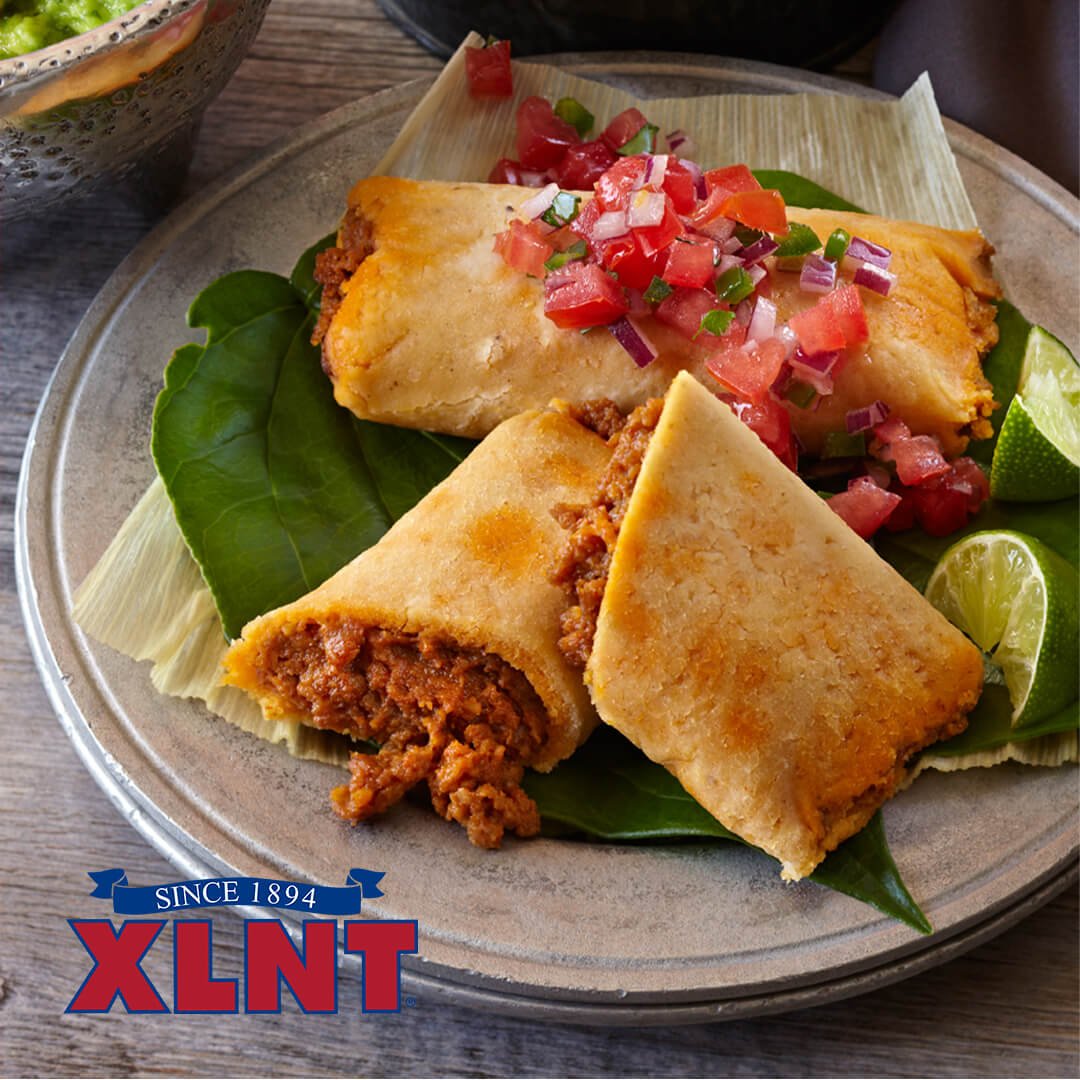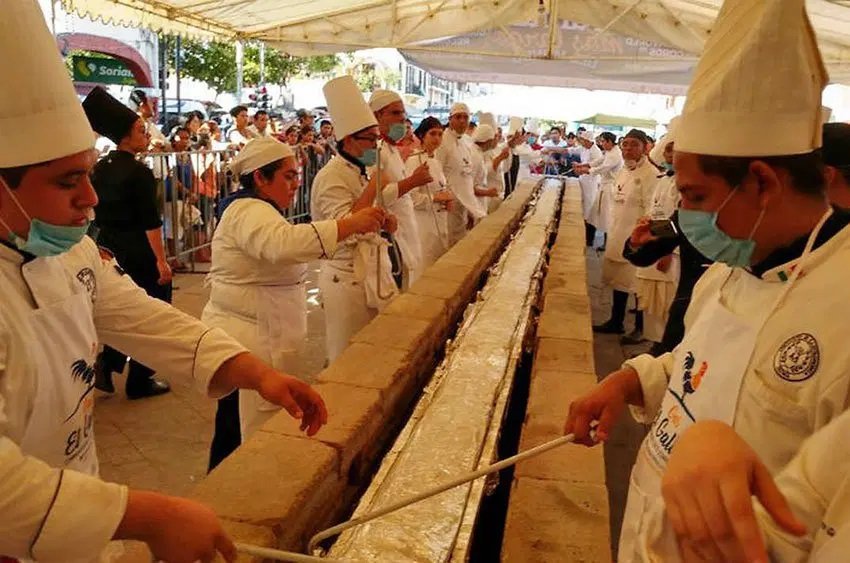A Quick History of Tamales and XLNT Foods
Tamales are one of the most popular foods to eat on the go or on special occasions. Countries worldwide have either adopted traditional tamale recipes or come up with their own. Although tamales are loved and enjoyed worldwide, many people don’t know the history of tamales or where it all began.
What Are Tamales?
Tamales are typically made from a corn dough called masa, which is spread inside a corn husk or banana leaf. They are stuffed with various fillings, such as chicken, beef, or vegetables, and then steamed. Although the husk and leaf wrappers are not edible, you can use them to hold the tamale while you eat it. If you prefer, you can discard the wrappers, and eat your tamale on a plate.
Fun Fact: Tamales have been cooked and eaten for thousands of years.
What Is the History of Tamales?
The origins of tamales go back as far as 8000 to 5000 B.C.E. They started in Mesoamerica, which we know today as Mexico, Central America, and South America. There were also references to tamales in the Mural of San Bartolo, which archaeologists found in Guatemala.
Tamales were first eaten by the Mayan, Aztec, Olmec, and Toltec civilizations, whose people took tamales along when they went hunting or on long trips. These civilizations also used tamales to feed soldiers when they went off to battle. Since tamales were portable and easy to carry, they were a type of fast food in ancient days. Some even consider them to be the first grab-and-go meal.
These civilizations, which considered tamales a sacred food, also made tamales for their religious festivals and offered them to the gods. In many Latin American households today, tamales are a holiday tradition. They are also eaten on other special occasions.
Fun Fact: According to Guinness World Records, the longest tamale ever made measured 164 feet, and was prepared on November 25th, 2018.
Where Else Are They Eaten?
As people continued to move around the world, they took their tamale recipes with them. Today, tamales remain popular in places throughout Mexico, Central America, South America, the Caribbean, and the United States. The history of tamales tells us that they also spread to the Philippines and Guam.
Mexico
2018 Guinness World Record, Mexico makes the longest tamale in the world that stretches 164 feet!
In Mexico, tamales can be eaten for breakfast or dinner and are usually filled with meat, vegetables, cheese, and chilies. Although cooking them can be time-consuming, it often becomes a family event, with several people joining in to help.
Central America
Tamales in Belize are called dukunu and are made with sweet corn. Although they are primarily vegetarian, dukunus can also be made with a meat filling.
In Guatemala, it’s a custom to eat tamales at midnight on Christmas Eve and New Year’s Eve. In addition to the usual ingredients of masa and meat or vegetable fillings, there are different varieties of tamales with ingredients that can include chocolate, plums, and alternative dough made from rice or potatoes.
A popular version of tamales in Nicaragua is called nacatamales. They are much larger than other tamales and can include seasoned pork, potatoes, onions, rice, and other ingredients.
In El Salvador, tamales are mostly eaten during the holidays. They are wrapped in banana leaves, and fillings include chicken, beans, or vegetables.
South America
A type of tamale dish served in Venezuela is called the hallaca. The filling for these is a mixture of chicken, beef, pork, and various vegetables. Black beans are also available as a vegetarian option.
Caribbean
In Puerto Rico, a corn masa dish called guanime is made with meat, seafood, beans, and nuts, and is grilled inside corn husks.
In the Dominican Republic, tamales are called guanimo and are stuffed with picadillo, which consists of meat, garlic, onions, raisins, and other ingredients.
In Trinidad and Tobago, a popular tamale cooked during the holidays is called pastelle. Wrapped and cooked in banana leaves, these cornmeal-based tamales are usually made with seasoned beef or chicken and are cooked alongside other ingredients, such as capers and raisins.
In Cuba, in addition to making traditional Mexican-style tamales, locals also developed a tamale-inspired dish called tamal en cazuela. To make it, the meat filling is mixed in with the masa and cooked on the stove, resulting in a type of cornmeal porridge.
Philippines and Guam
Tamales in the Philippines are made with rice-based dough, while the ones in Guam are made with corn masa. Meat for the filling is either chicken or pork that’s been seasoned, along with peanuts. The most common varieties include sweet, savory, or a combination of the two.
Fun Fact: Tamales can be eaten for breakfast, lunch, or dinner.
What Is the History of Tamales in the U.S.?
In the early 1700s, Spanish settlers in northern Louisiana began to make the first tamales in the eastern part of the U.S. However, they had been in the country for almost 200 years before receiving their biggest début at the 1893 Chicago World Fair.
1908 XLNT Foods horse drawn carriage for deliveries in Southern California
In Los Angeles, California, in 1894, our founder, Alejandro Morales, started the XLNT Tamale Company, which is now called XLNT Foods. Although our tamales were available in grocery stores, back then, many of them were sold out of horse-drawn carts. It didn't take long before they were the most popular tamales in all of L.A.
As tamales were introduced to different areas around the country, various ethnic groups began to develop their own style and ways of making them. Among indigenous tribes, the Chickasaw and Choctaw versions of tamales can be filled with various meats and vegetables, such as fried bacon, sweet potatoes, or nuts. When the tamale spread to the Mississippi Delta, the recipe changed again, as the African Americans there substituted cornmeal for masa and created a spicy tamale, also known as a "hot tamale." They're also boiled, instead of steamed inside of corn husks.
Fun fact: Since 2015, National Tamale Day has been celebrated each year on March 23rd and XLNT Foods does a Tamale giveaway to celebrate this special day
Why Don’t You Try Some?
The history of tamales shows us just how great and versatile this dish can be. That’s why it continues to be a popular food and holiday tradition for many people. If all this talk about tamales has made you hungry, you can find our products online or in a grocery store near you.
Sources:
https://en.wikipedia.org/wiki/TamaleTamale - Wikipedia
https://www.xlntfoods.com/aboutOur Story | Quality Foods Since 1894
https://www.xlntfoods.com/xlnt-store
https://nationaltoday.com/national-tamale-day
https://www.xlntfoods.com/locate



